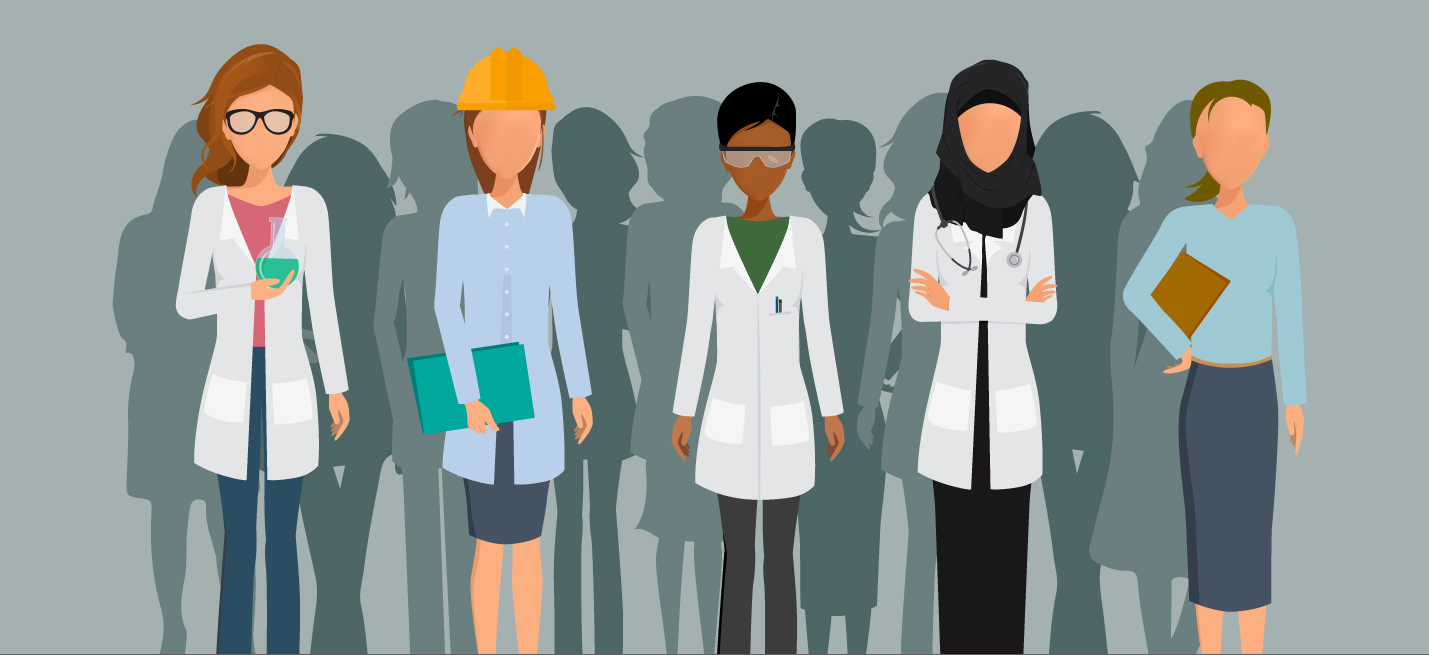Description

Copyright infringement is not intended
Context: In the Lok Sabha, The Ministry of Women and Child Development presented the details about the steps taken for increasing Women Participation in Workforce.
Women in Workforce in India
- The participation of women in the workforce in India has remained low.
- In 2019, 21% of women were either working or looking for work, compared to 32% in 2005.
- India’s female labour force participation (FLFP) rate is the lowest among the BRICS countries and is also lower than some of its neighbours in South Asia such as Sri Lanka and Bangladesh.
- Increasing FLFP in India is crucial not just to achieve economic growth but also to promote inclusive growth and achieve the Sustainable Development Goals.
- India's population is among the youngest in the world. In 2020, the median age in India was about 29. Women and girls form a significant part of India’s demographic dividend.
- However, their inability to stay employed or, at times, take up employment due to economic and social factors at both the household and macro level has been a challenge for the labour market and economy.
- More women in rural areas in the labour force Compared to Urban areas.
- Gender wage gaps remain in every employment.
- Migration of women for employment has increased in recent years.
- According to United Nations Women estimates, women make up a significant proportion of all healthcare workers and more than 80% of nurses and midwives.
- Women also form a significant proportion of the workforce in the education sector in India, especially in primary education and early childhood care.
- The care service sector, which includes health, education, and other personal care services, is more labour-intensive than sectors such as manufacturing, construction or other service sectors where the employment potential gets affected due to factors such as the introduction of tools, technology and increased mechanisation.
Steps taken by Government
- In order to promote women empowerment and their safety to increase their participation in the workforce, the Government has approved a new and comprehensive Umbrella Scheme for safety, security and empowerment of women under the name 'Mission Shakti'.
- The Mission Shakti, includes the components such as;
- National, State and District level Hubs for Empowerment of Women.
- Women Hiplines, One Stop Centres.
- Beti Bachao Beti Padhao, Sakhi Niwas (Working Women’s Hostels).
- Palna (crèches for children of working women) etc.
- The schemes of One Stop Centres and Universalization of Women Helpline are implemented by the Ministry of Women and Child Development to support women facing violence or distress of any kind which may adversely affect their participation in the workforce.
- Working Women Hostels for ensuring safe accommodation for women working away from their place of residence.
- National Crèche Scheme to provide daycares’ facilities to children of the age group of 6 months to 6 years of working women who are employed.
- The Government, with the aim to provide safe and secure work environment to women at their workplace and to increase their participation in the workforce, has also enacted ‘the Sexual Harassment of Women at Workplace (Prevention, Prohibition and Redressal) Act, 2013’ (SH Act).
- The Act covers all women, irrespective of their age or employment status and protect them from sexual harassment at all workplaces whether public or private, organized or unorganized.
- The Act casts an obligation upon employers to provide a safe and secure working environment free from sexual harassment by constituting Internal Committees (ICs) for workplaces with ten or more workers and by displaying at conspicuous places the penal consequences of sexual harassment and the orders constituting ICs.
- Local Committees (LCs) are to be constituted under the Act in districts to receive complaints in organisations having less than 10 workers or if complaints are against employers themselves.
- Employers are also required to organise workshops and awareness programmes at regular intervals for sensitising the employees about the provisions of this legislation.
- In order to enhance the employability of female workers and ensure economic independence of women through skill development and vocational training, the Government has also introduced Skill India Mission under which training is provided through a network of women Industrial Training institutes, National Vocational Training Institutes and Regional Vocational Training Institutes.
- The National Skill Development Policy focuses on inclusive skill development, with the objective of increased women participation for better economic productivity.
- There are schemes like Pradhan Mantri Mudra Yojana and Stand-up India, for helping the women to set up their own enterprises.
- The Labour Codes, viz. The Code on Wages 2019, the Industrial Relations Code, 2020, Occupational Safety, Health and Working Conditions Code, 2020 and the Code on Social Security, 2020, collectively include provisions to promote participation of women in the workforce in a dignified manner and with adequate safety measures adopted by the employers.
Steps need to be taken
- Need to Integrate Policy of Work, Livelihoods, Earnings and Poverty, Re‐think and Integrate macroeconomic Policy with Social Policy.
- Improve women’s access to Credit, skills, marketing.
- Pay regular wages to Asha workers, Anganwadi teachers and helpers, cooks for mid‐day meals and regularise their employment.
- Improve working conditions for women, Investments in childcare facilities and toilets for women at all workplaces.
- Sensitisation on issues such as sexual division of labour within the home through large scale media advertisement.
- Implementation of minimum wage laws, Creation of employment opportunities.
- Enable universal access to high quality public health care facilities and support for women's care.
- All women workers should have identity cards and be covered under Unorganised Sector Social Security Act, 2008.
- Secure and uphold women’s ownership rights over basic productive resources like land, Create equal rights to property.
- Universal healthcare with health insurance, Focus on primary health so that private expenses and indebtedness on account of health and hospitalisation can be eliminated.
- Better childcare facilities, more maternity leave, Remote working facilities, Better public transport.
- A minimum social security package available to all citizens that include life insurance, disability insurance, health insurance, and pensions offered through multiple distribution channels.
Conclusion
- Women’s education has increased significantly over the last two decades, and fertility rates have fallen — both conditions that have historically and elsewhere in the world, contributed to increasing participation of women in the paid labour force, but not so in India.
- The Covid-19 induced economic slowdown has exacerbated the gender gap in paid work, while it has intensified the already high burden of domestic labour on women.
https://www.pib.gov.in/PressReleasePage.aspx?PRID=1809703













